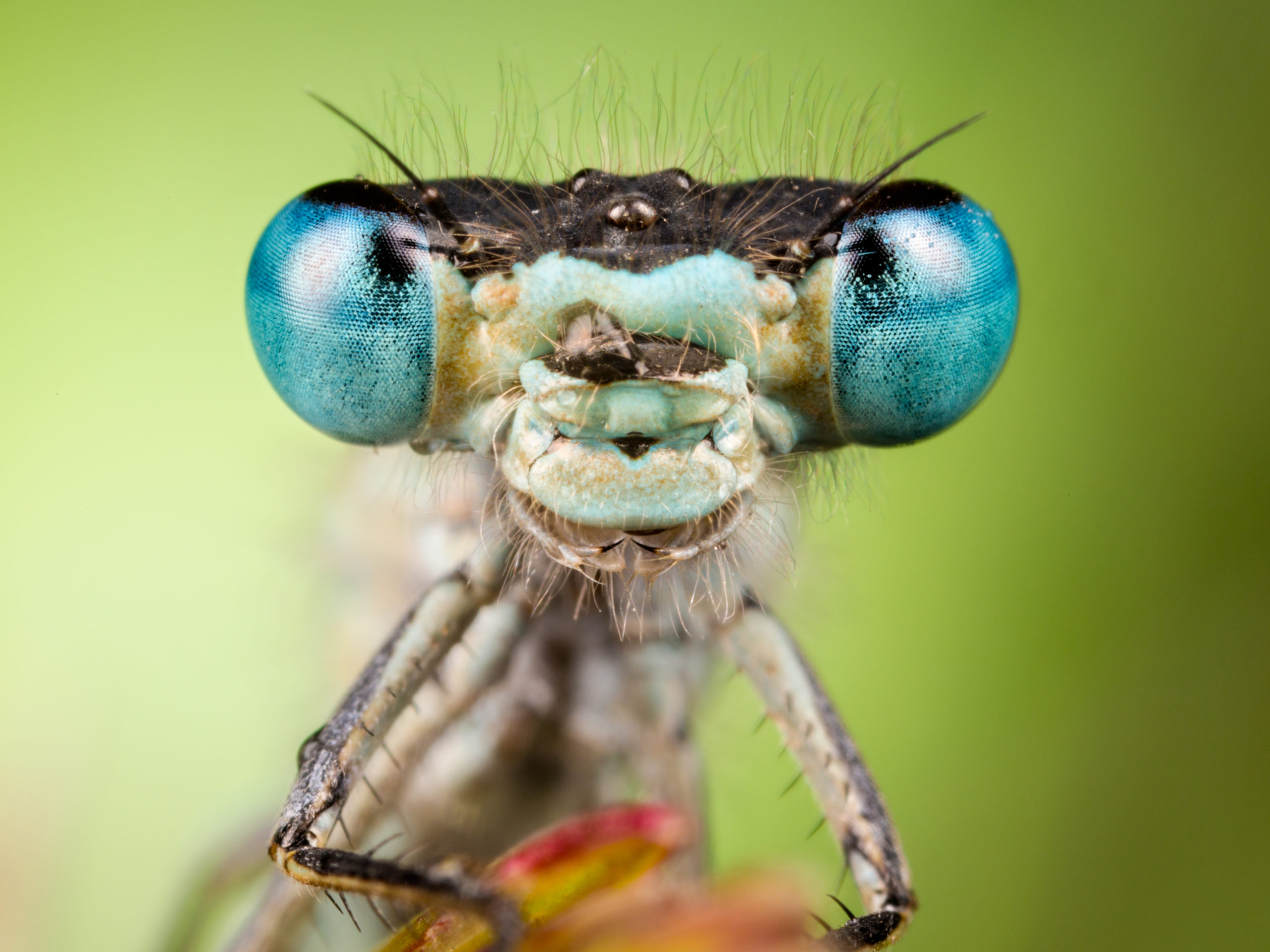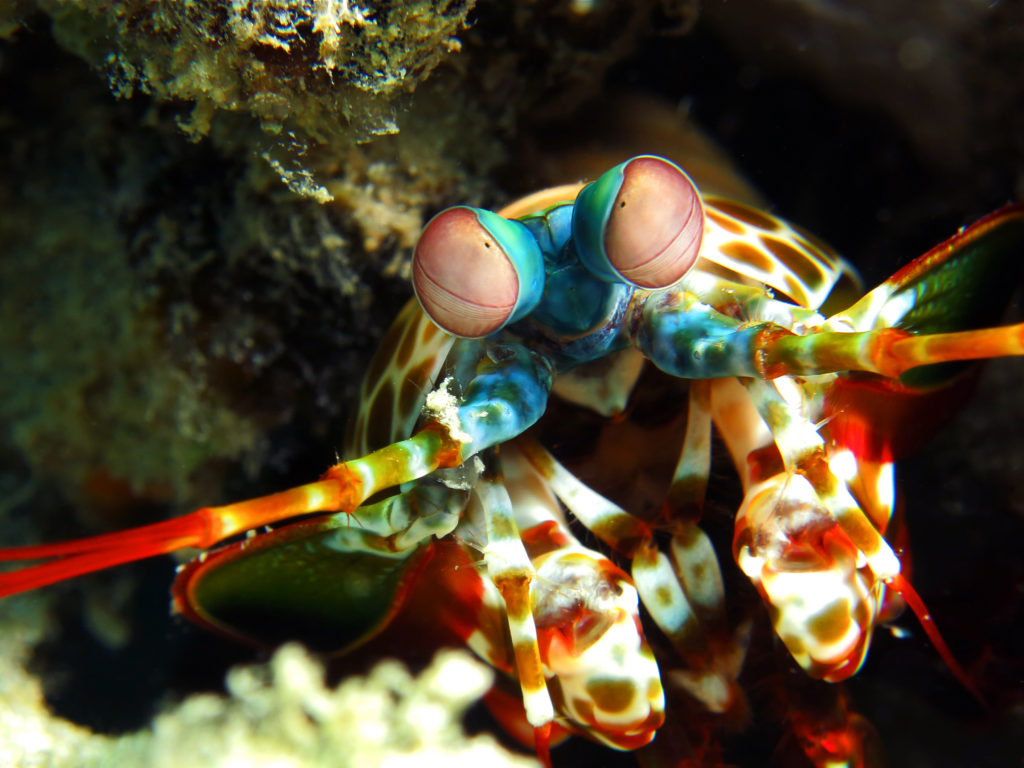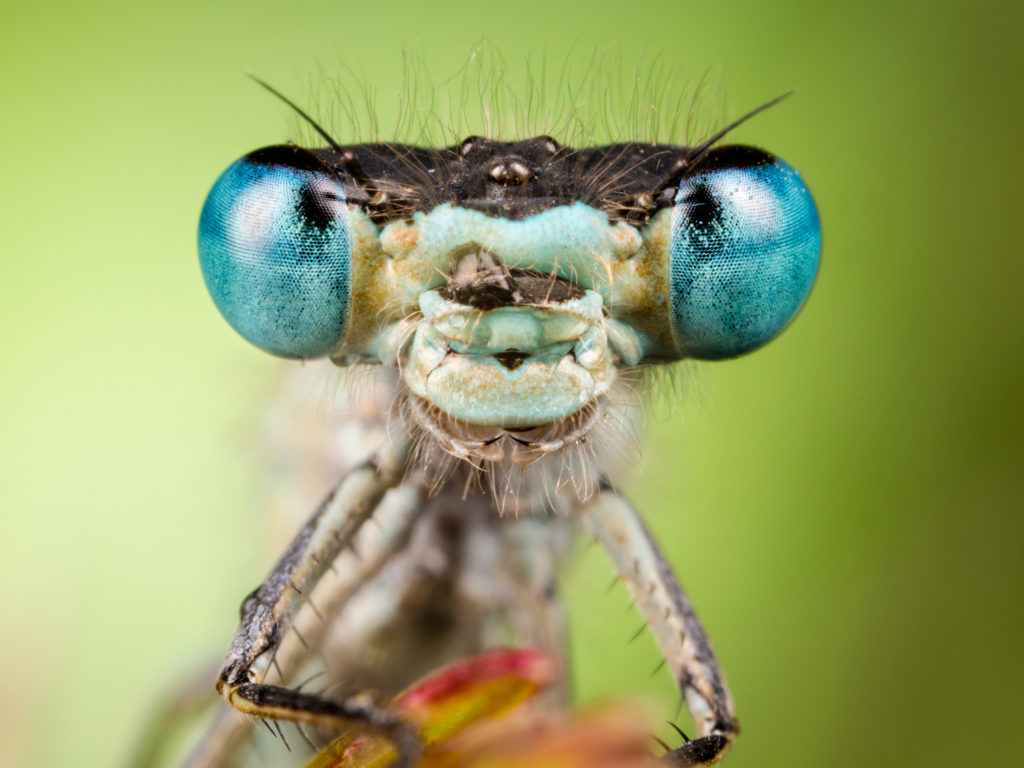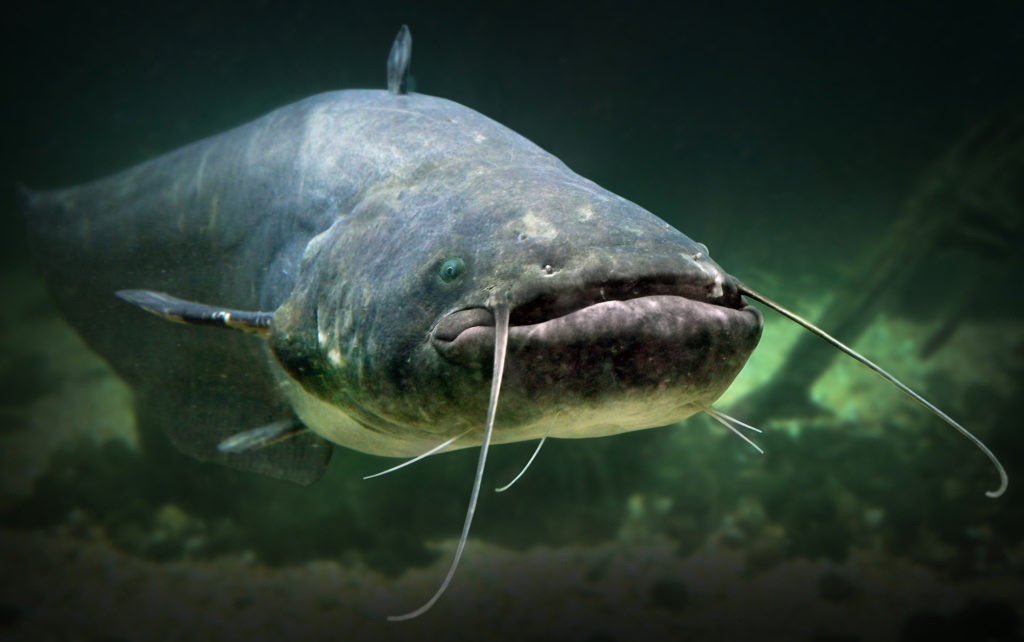
Mantis Shrimps

Mantis shrimps are marine crustaceans that live in warm shallow water. They typically grow to be six to twelve inches in length, and live between three to six years. Though this colourful crustacean is small in size, they’ve actually got the world’s fastest and most powerful punch. Two raptorial appendages on the front of their bodies can be unfurled so quickly that the water around them actually boils. The velocity of their punch is equivalent to a gunshot from a twenty-two caliber rifle. Despite their size, these sea creatures could go toe to toe with the world’s greatest and come out unscathed.
Dolphins

Dolphins, often thought of as dogs of the sea, absolutely crush humans when it comes to hearing abilities. Their hearing range is 20Hz to 150kHz, a whopping seven times that of humans, whose range is between 20 Hz to 20kHz. Of all mammals, dolphins are able to both hear and produce some of the highest frequency sounds.
Dragonflies

Humans have three types of light sensitive proteins in their eyes, called opsins. These allow us to see colours as a combination of red, blue and green. This means we’ve got trichromatic vision. Dragonfly species on the other hand, have got between 11 to 30 different opsins. These extra opsins give dragonflies far superior colour discrimination than humans. It’s likely they see ultraviolet on top of red, blue and green, and can even recognize polarized light coming off of reflective surfaces. Must be hard to pick just one favourite colour with a range like that!
Bears

Bears have an incredibly keen sense of smell. The area in their brain that controls the sense of smell is five times the size of a human! Bears can detect the carcass of a dead animal from up to 32km away, and are considered to have one of the most robust senses of smell in the animal kingdom. No wonder they make bear resistant containers for campers!
Catfish

Humans have about 10,000 taste buds, which sounds pretty impressive, until you look at catfish. Catfish have up to 100,000 taste buds, in their mouths and all over their bodies. This means these whiskered bottom dwellers can taste food that may be floating around them before even eating it. This plethora of taste buds is especially important as they live in murky water where visibility is poor, and their profound sense of taste helps them hunt efficiently. The catfish would make one heck of a food critic!
